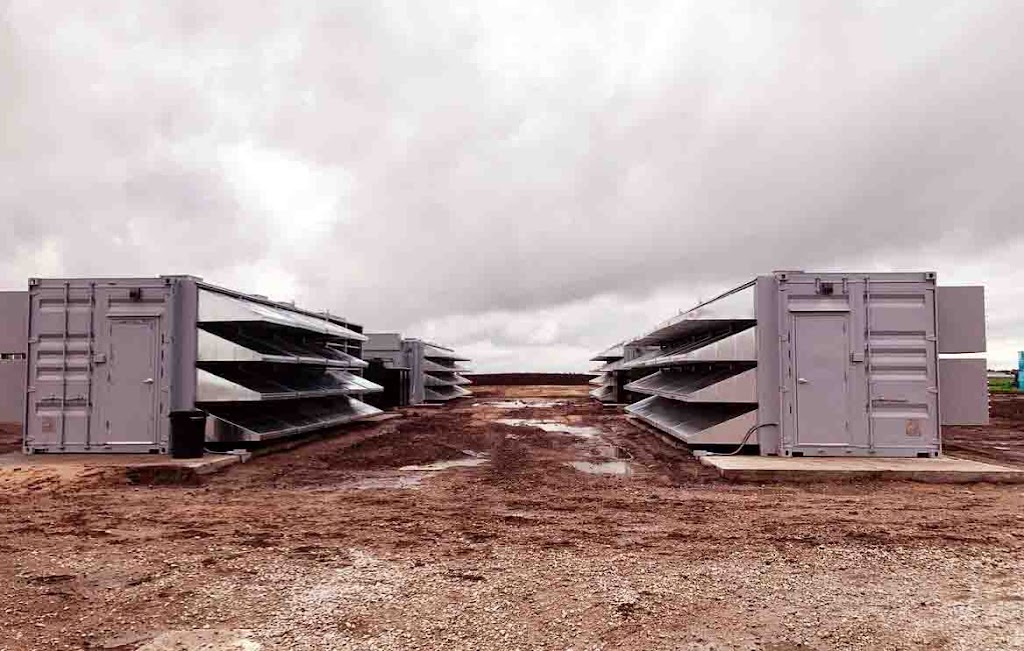The groundbreaking database technology known as blockchain is what powers almost all cryptocurrencies. Blockchain makes it incredibly difficult to attack or game the system by dispersing identical copies of a database throughout an entire network.
Although cryptocurrency is now the most prominent application for blockchain, the technology has the potential to be used for a very broad range of purposes.
Describe blockchain.
Blockchain Technology , at its heart, is a distributed digital ledger that houses all types of data. Cryptocurrency transactions, NFT ownership, or DeFi smart contracts can all be recorded on a blockchain.
Although this type of data can be stored in any traditional database, blockchain is unique in that it is completely decentralized. Imagine an Excel spreadsheet or a bank database, but instead of being kept in one place by a single administrator, a blockchain database is held on numerous identical copies on numerous machines dispersed throughout a network. Nodes are the collective name for these distinct computers.
How do blockchains function?
The name “blockchain” is not by chance. It is common to refer to the digital ledger as a “chain” made up of distinct “blocks” of data. A new “block” is made and attached to the “chain” each time new data is added to the network on a regular basis. To achieve this, all nodes must update their copies of the blockchain ledger to match one another.
The key reason why blockchain is seen as being extremely safe is how these new blocks are formed. Before a new block is added to the ledger, a majority of nodes must verify and affirm the legitimacy of the new data. They might entail verifying that new transactions in a block are genuine or that coins haven’t been used more than once for a cryptocurrency. A standalone database or spreadsheet, where one individual can make changes without supervision, is not the same as this.
“Once there is consensus, the block is added to the chain, and the underlying transactions are recorded in the distributed ledger,” explains C. Neil Gray, partner in the fintech practice areas at Duane Morris LLP. As a result, “blocks are securely linked together, forming a secure digital chain from the beginning of the ledger to the present.”
Typically, cryptography is used to safeguard transactions; thus, in order for nodes to complete a transaction, difficult mathematical equations must be solved.
According to Sarah Shtylman, a fintech and blockchain counsel at Perkins Coie, “as a return for their work in certifying changes to the shared data, nodes are often rewarded with new quantities of the blockchain’s native currency—for example, fresh bitcoin on the bitcoin blockchain.
Comparing public and private blockchains

Blockchains can be public or private. Anyone can participate in a public blockchain, which means they can read, write, or audit the data on the blockchain. Notably, because no single entity controls the nodes, it is exceedingly impossible to change transactions that have been recorded in a public blockchain.
In contrast, a private blockchain is managed by a company or group. It has the power to go back and change the blockchain, and it is the only one who can select who gets admitted to the system. With the exception of being distributed over numerous nodes to improve security, this private blockchain procedure is more comparable to an internal data storage system.
What is the purpose of blockchain?
From managing voting systems to offering financial services, blockchain technology is employed for a variety of tasks.
Cryptocurrency
As the foundation of cryptocurrencies like Bitcoin or Ethereum, blockchain is currently used the most frequently. A blockchain keeps track of all cryptocurrency purchases, exchanges, and expenditures. The more cryptocurrency users there are, the more commonplace blockchain technology may become.
Cryptocurrencies are still not widely used to make purchases of products and services because of their volatility. The availability of digital asset services to retailers and vendors is expanding thanks to companies like PayPal, Square, and other money service organizations, says Patrick Daugherty, senior partner at Foley & Lardner and chair of the firm’s blockchain technology task force.
Banking
blockchain technology is being utilized to execute transactions in fiat currency, such as dollars and euros, in addition to cryptocurrencies. Due to speedier transaction verification and processing outside of regular business hours, this may be quicker than sending money through a bank or other financial institution.
Transfer of Assets
The ownership of various assets can also be tracked and transferred using blockchain technology. Digital assets like NFTs, a representation of ownership of digital artwork and videos, are currently quite popular.
Blockchain might, however, also be utilized to handle the ownership of physical assets, such as real estate and vehicles. The blockchain technology would be used by both parties to a transaction to first confirm who has the property and who has the funding before the sale could be finalized and recorded.
With this method, they could transfer the property deed without having to manually submit documents to amend the county’s official records; instead, the blockchain technology would be instantly updated.
Insightful Contracts
Self-executing contracts, or “smart contracts,” are another blockchain technology invention. Once certain requirements are met, these digital contracts take effect automatically. For instance, after the buyer and seller have satisfied all requirements for an agreement, a payment for a good may be immediately released.
Smart contracts, which automate legal contracts using blockchain technology and written instructions, have a lot of potential, according to Gray. “The need for external third parties to verify performance can be reduced, or ideally eliminated, by a properly coded smart legal contract on a distributed ledger.”
supply chain oversight
Large volumes of information are involved in supply chains, particularly as items are transported across international borders. It can be challenging to identify the root cause of issues, such as the vendor from whom subpar items were purchased, when using conventional data storage techniques. As with IBM’s Food Trust, which employs blockchain technology to track food from its cultivation to its consumption, storing this information on blockchain technology would make it simpler to review and monitor the supply chain.
Voting
Experts are investigating how to use blockchain technology to stop voting fraud. Theoretically, blockchain voting would make it unnecessary for individuals to physically gather and validate paper ballots by allowing voters to submit votes that couldn’t be tampered with.
The benefits of blockchain technology
Higher Transaction Accuracy
This can lower errors because a blockchain technology transaction needs to be confirmed by several nodes. The other nodes would notice something was off and recognize the error if one node had a database error.
In contrast, if a mistake is made in a traditional database, it may be more likely to be accepted. There is also no possibility of double spending because each asset is uniquely identifiable and recorded on the blockchain technology ledger (unlike when someone overdraws their bank account and spends money twice).
No need for middlemen
Blockchain enables two parties to a transaction to confirm and finish it directly between themselves. This saves time and money on paying a middleman, such as a bank.
According to Shtylman, “it has the potential to increase the efficiency of all digital commerce, to increase financial empowerment among the unbanked or underbanked populations of the world, and, as a result, to power a new generation of internet applications.”
Added Security
Theoretically, it is nearly impossible to conduct fraudulent transactions on a decentralized network like the blockchain. They would have to hack each node and modify each ledger in order to add fake transactions. While not strictly impossible, many cryptocurrency blockchain systems use proof-of-stake or proof-of-work transaction verification techniques, which make it challenging and not in the participants’ best interests to add fraudulent transactions.
Less time-consuming transfers
People may move assets and money more effectively because blockchains are available around the clock, especially when doing so overseas. There is no need for them to wait days for a bank or a government organization to manually authenticate everything.
Benefits of Blockchain
Transactions Per Second Maximum
There is a speed limit for blockchain since transactions must be approved by a wider network. For instance, Visa can process 1,700 transactions per second, but Bitcoin can only process 4.6. Additionally, an increase in transactions may slow down the network. Scalability is a problem right now until things get better.
High Costs of Energy
It uses a lot more electricity than a single database or spreadsheet to have all the nodes validate transactions. This increases the cost of blockchain-based transactions and places a significant carbon load on the environment.
As a result, some prominent business figures are starting to distance themselves from Bitcoin and other blockchain technologies. For instance, Elon Musk recently said that Tesla will stop taking Bitcoin, in part due to his fear for the harm that it might create to the environment.
Asset loss risk
Cryptographic keys are used to secure some digital assets, such as cryptocurrencies stored in a blockchain wallet. This key needs to be kept in a safe place.
According to Gray, there is currently no means to retrieve a lost private cryptographic key that grants access to a digital asset; the asset is irretrievably lost. You cannot call a centralized organization, such as your bank, to request access because the system is decentralized.
Possibility of Illegal Behavior
The decentralization of blockchain increases anonymity and confidentiality, which regrettably attracts crooks. Compared to bank transactions that are associated with a name, it is more difficult to track unauthorized transactions on a blockchain.
A Guide to Blockchain Investment
Blockchain is only a system for storing and processing transactions; therefore, you can’t actually invest in it. However, you can use this technology to invest in assets and businesses.
The simplest method, according to Gray, is to buy blockchain-based cryptocurrencies like Bitcoin, Ethereum, and other tokens. Investing in blockchain technology businesses that use this technology is an additional choice. For instance, Santander Bank is testing out blockchain-based financial products; if you wanted to include blockchain technology in your investment portfolio, you might buy its stock.
You might invest in an exchange-traded fund (ETF) that invests in blockchain technology assets and businesses, such as the Amplify Transformational Data Sharing ETF (BLOK), which holds at least 80% of its assets in blockchain businesses, for a more diversified strategy.
The Conclusion
Blockchain technology is still somewhat of a niche technology, despite its potential. Gray believes that blockchain technology has the potential to be employed in additional contexts, but that depends on future governmental regulations. It is unclear when and whether regulators like the SEC will intervene. The objective will be to protect markets and investors; that much is clear, he says.
Blockchain is compared by Shtylman to the early days of the internet. Before Google and Facebook had their first iterations, the internet had been around for nearly 15 years. Although it’s difficult to anticipate where blockchain technology will go in another ten or fifteen years, it will fundamentally alter how we transact and communicate with one another in the future, much like the internet.
While there are still obstacles, such as transaction restrictions and energy costs, investing in blockchain-based projects may be worthwhile for investors who recognize the technology’s promise.











